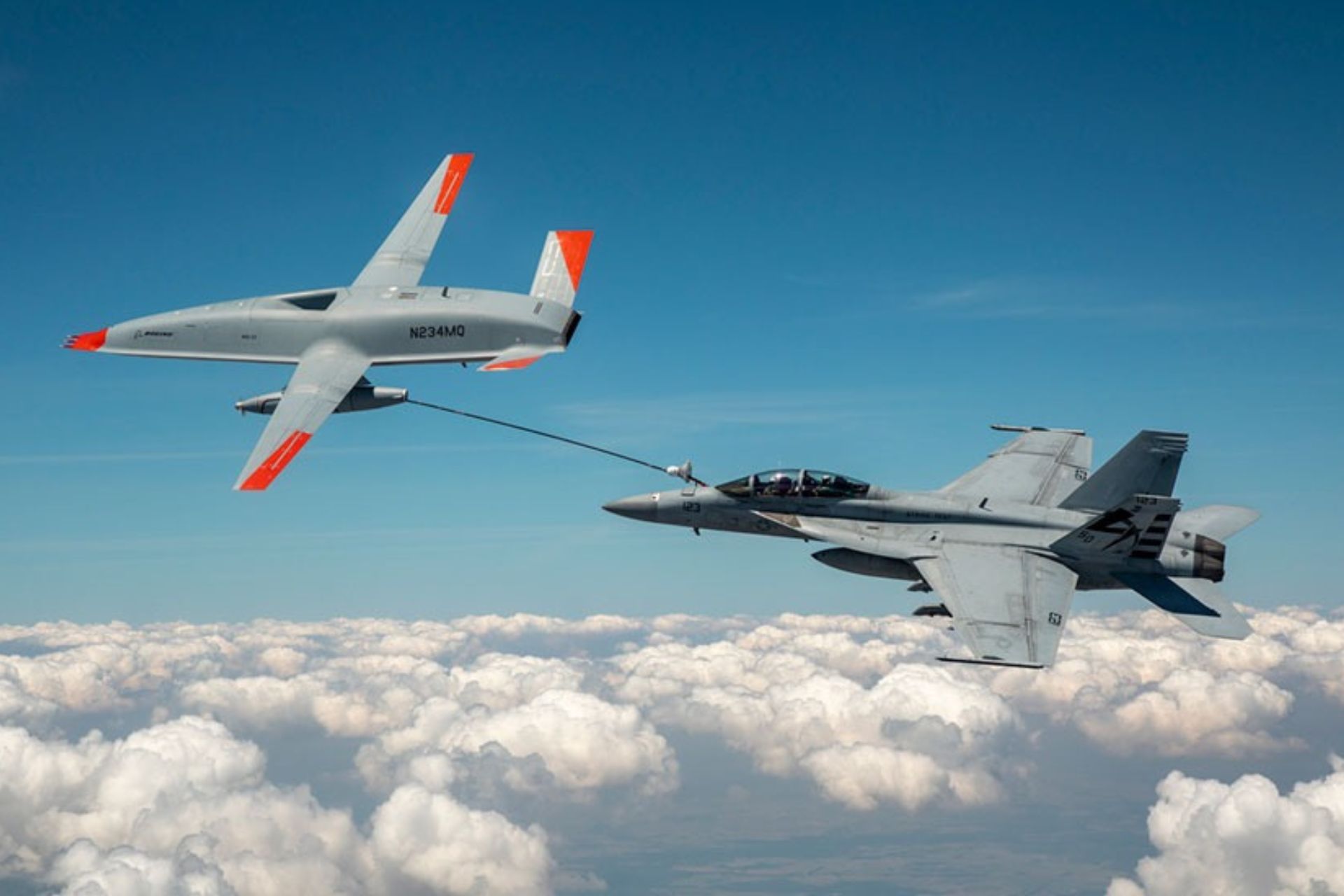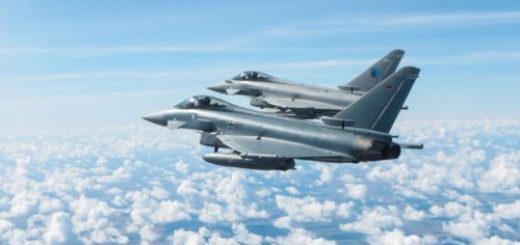Boeing Anticipates Production Contract for MQ-25 Stingray Unmanned Aerial Refueling Aircraft by Mid-2025

{loadposition bannertop}
{loadposition sidebarpub}
At the Farnborough International Airshow, which began on July 22, 2024, Boeing announced preparations for a significant phase in the development of its MQ-25 Stingray, an unmanned aerial refueling aircraft designed for the U.S. Navy (USN). Troy Rutherford, the MQ-25 program manager at Boeing, stated that the USN is expected to issue the first request for proposals (RFP) for low-rate initial production (LRIP) in the second half of 2024, with a contract likely to be awarded by mid-2025.Follow Army Recognition on Google News at this link
Primarily designed to extend the combat range of carrier-based aircraft such as the F/A-18 Super Hornet and F-35C Lightning II, the MQ-25 enhances operational flexibility and endurance (Picture source: Airbus)
The MQ-25 Stingray is an unmanned aerial refueling aircraft developed by Boeing for the U.S. Navy. Primarily designed to extend the combat range of carrier-based aircraft such as the F/A-18 Super Hornet and F-35C Lightning II, the MQ-25 enhances operational flexibility and endurance. It represents the first operational carrier-based unmanned aircraft in U.S. naval aviation, marking a significant advancement.
The aircraft is equipped with sophisticated avionics and an aerial refueling system capable of delivering approximately 15,000 pounds of fuel 500 nautical miles from the carrier, fundamentally transforming the role and capability of carrier air wings.
Currently, six MQ-25s are under production at Boeing’s facility in St. Louis, Missouri. Of these, one is intended for static tests while the other five are development, engineering, and manufacturing (EMD) models. These EMD models are vital as they serve as aerial test vehicles, laying the groundwork for the eventual LRIP. The first flight of an MQ-25 EMD is scheduled for December 2025.
Additionally, Boeing plans to relocate MQ-25 production to MidAmerica St. Louis Airport in Mascoutah, Illinois, by the end of 2025. This move is part of a broader strategy to transition the MQ-25 program from development to full-scale production.
In a significant development effort, Boeing’s team is also focusing on internally funded software improvements. This new software would enable a USN F/A-18 Super Hornet or E-2D Hawkeye to remotely control MQ-25s. The main function of this capability is to allow aircraft requiring refueling to directly command the Stingray on its flight path and refueling operations.
This software advancement is crucial as much of it is newly created to meet the specific requirements of a new ground control station and USN contractual standards. The need for new software arises from the fact that the prototypes, which first flew in September 2019, operate under different technological frameworks.

{loadposition bannertop}
{loadposition sidebarpub}
At the Farnborough International Airshow, which began on July 22, 2024, Boeing announced preparations for a significant phase in the development of its MQ-25 Stingray, an unmanned aerial refueling aircraft designed for the U.S. Navy (USN). Troy Rutherford, the MQ-25 program manager at Boeing, stated that the USN is expected to issue the first request for proposals (RFP) for low-rate initial production (LRIP) in the second half of 2024, with a contract likely to be awarded by mid-2025.
Follow Army Recognition on Google News at this link
Primarily designed to extend the combat range of carrier-based aircraft such as the F/A-18 Super Hornet and F-35C Lightning II, the MQ-25 enhances operational flexibility and endurance (Picture source: Airbus)
The MQ-25 Stingray is an unmanned aerial refueling aircraft developed by Boeing for the U.S. Navy. Primarily designed to extend the combat range of carrier-based aircraft such as the F/A-18 Super Hornet and F-35C Lightning II, the MQ-25 enhances operational flexibility and endurance. It represents the first operational carrier-based unmanned aircraft in U.S. naval aviation, marking a significant advancement.
The aircraft is equipped with sophisticated avionics and an aerial refueling system capable of delivering approximately 15,000 pounds of fuel 500 nautical miles from the carrier, fundamentally transforming the role and capability of carrier air wings.
Currently, six MQ-25s are under production at Boeing’s facility in St. Louis, Missouri. Of these, one is intended for static tests while the other five are development, engineering, and manufacturing (EMD) models. These EMD models are vital as they serve as aerial test vehicles, laying the groundwork for the eventual LRIP. The first flight of an MQ-25 EMD is scheduled for December 2025.
Additionally, Boeing plans to relocate MQ-25 production to MidAmerica St. Louis Airport in Mascoutah, Illinois, by the end of 2025. This move is part of a broader strategy to transition the MQ-25 program from development to full-scale production.
In a significant development effort, Boeing’s team is also focusing on internally funded software improvements. This new software would enable a USN F/A-18 Super Hornet or E-2D Hawkeye to remotely control MQ-25s. The main function of this capability is to allow aircraft requiring refueling to directly command the Stingray on its flight path and refueling operations.
This software advancement is crucial as much of it is newly created to meet the specific requirements of a new ground control station and USN contractual standards. The need for new software arises from the fact that the prototypes, which first flew in September 2019, operate under different technological frameworks.






